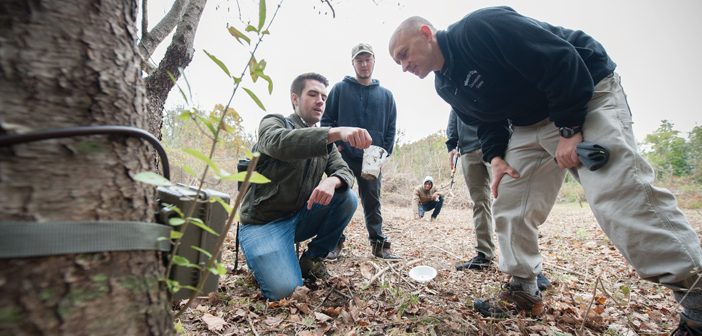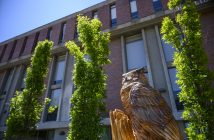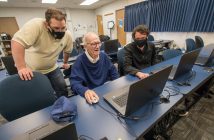A few years ago, Biology Professor Tim Parshall, Ph.D., approached Environmental Science Professor Kelly Anne McKeown, Ph.D., to ask if she could isolate the bacteria in ticks that leads to Lyme disease. Dr. McKeown was intrigued, and the two began a cross-departmental project.
Dr. Parshall, a forest ecologist, says that the tick project is an investigation of the complex interactions that happen in a forest. Since the incidence of Lyme disease has been increasing in the northeastern United States, Dr. Parshall became interested in researching the cause. “I’m doing this research to help students understand the process of science and have found that real-world, interesting projects like this help out a lot,” he says.
This semester, Drs. Parshall and McKeown have been working with three students on the tick research—Madison Kaplan ’19, Michelle Hudon ’19, and Paul Sullivan ’19. They are studying the various ways in which environment affects tick population and the bacteria that ticks produce.
Sullivan, a biology major, conducted research as part of the project in the fall 2018 semester and presented his findings at the Center for Undergraduate Research and Creative Activity (CURCA). “The laboratory work has been quite satisfying,” says Sullivan, who plans to focus on a career in clinical laboratory science after graduation. “I truly enjoy working by myself in the lab, because it helps me understand exactly why I am doing each step of the procedure. This sort of project truly gives me a sense of pride in knowing that I put
in the time and effort to produce quality results.”
Most of the students Dr. Parshall works with are seniors, so they come with extensive knowledge of the environmental science field already, but they might not have significant research or troubleshooting skills. “That’s something you have to learn by doing,” Dr. Parshall says. “The skills that students gain through this kind of research—problem-solving, selfdirection, data analysis, troubleshooting—will benefit them in
their future careers as environmental professionals.”
Both professors enjoy the engaging cross-departmental collaboration. Dr. Parshall’s students collect and analyze the ticks, while Dr. McKeown’s students analyze the bacteria. Both professors find it satisfying to see the project from the lens of the other. “It allows us both to do something more interesting and worthwhile than if we were working on our own,” Dr. Parshall says.




